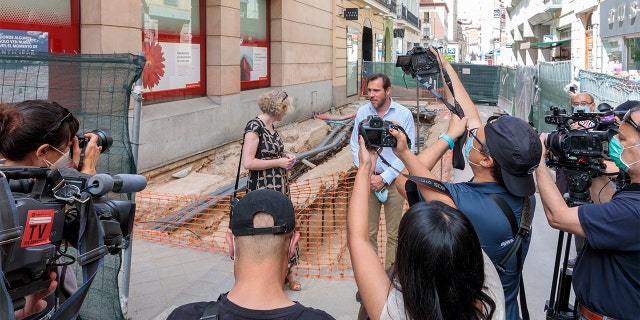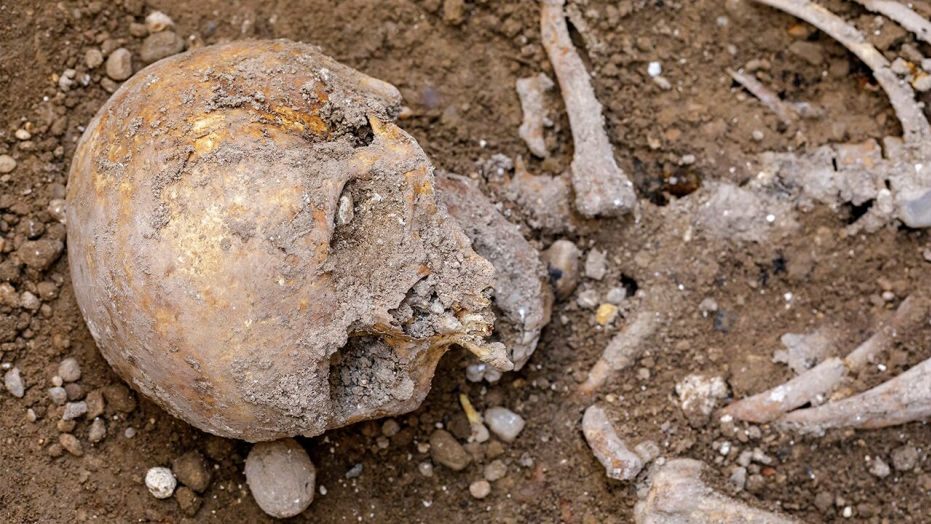By James Rogers 2-7-2020
Archaeologists in Spain are continuing their hunt for the bones of “Red Hugh,” a 16th-century Irish chieftain who is said to be buried in the city of Valladolid.
Red Hugh O’Donnell fought English rule in Ireland and died in exile. He was in Valladolid, then the capital of Spain, when he died in 1602.
An excavation is now underway to uncover the so-called Chapel of Wonders where O’Donnell was buried. The Chapel was once part of a Franciscan monastery that was leveled in the 19th century.
THE HUNT FOR RED HUGH: ARCHAEOLOGISTS IN SPAIN SEARCH FOR 16TH-CENTURY IRISH CHIEFTAIN’S BONES
The search began on May 18.
“On the second day of the dig, the researchers found what could be the left side wall of the Chapel, a perfectly preserved and carved limestone wall, to which other walls were discovered days later and the appearance of about twenty practically complete skeletons,” said the city of Valladolid, in a translated statement Thursday. “This represents an important development, since on the one hand the existence and location of a Chapel had been documented, but of which up to now there had been no tangible evidence, and at the same time the use of the area for burials was also confirmed.”

Some of the human remains uncovered during the excavation in Valladolid.
(Paco Heras)
However, archaeologists have not yet been able to identify Red Hugh.
“The Irishman lost his big toes to frostbite while escaping from a kidnapping by the English, but the loss and disappearance of bones from those body parts of the skeletons found has made a first identification impossible,” the city explained in its statement.
Experts are now planning the next stage of their research, which will involve scientific analysis of the human remains. This, officials say, will almost certainly be carried out by the Department of Anatomy and Radiology of the University of Valladolid’s Faculty of Medicine.
“Later, DNA analysis could be performed on any of the bodies that are compatible with Red Hugh’s identity,” the city of Valladolid explained.
FACIAL RECONSTRUCTION PROVIDES GLIMPSE OF PRIEST WHO DIED 900 YEARS AGO
While the excavation has focused on a street in central Valladolid, archaeologists are also eyeing a neighboring building, which may have been built over part of the Chapel.
“The works carried out have opened new avenues of investigation, since the team that directs the excavation considers that a good part of the Chapel of Wonders is located under the neighbouring building, owned by Banco Santander, where the possibility of conducting geotechnical surveys will be studied,” said the city of Valladolid.

20 skeletons have been discovered at the Valladolid excavation site. (Pacos Heras)
On Thursday the Irish Ambassador to Spain, Síle Maguire, visited the excavation site with the Mayor of Valladolid Oscar Puente.
Born into a noble family, Red Hugh O’Donnell is known as “Red Hugh” as a result of his Irish family name “Ruadh O’Domnhaill” – “Ruadh” is the Irish word for red.

the Irish Ambassador to Spain, Síle Maguire, visited the excavation site with the Mayor of Valladolid Oscar Puente.
(fheras)
A rebel leader, O’Donnell fought in the Nine Years War against the English in Ireland, which began in 1593. In 1601 after English forces defeated O’Donnell and allied Spanish troops in the battle of Kinsale, he left Ireland, according to the Ask about Ireland website.
The nobleman traveled to Spain to request further help from King Philip III, but, nine months later, he was struck down by illness and died, the website explains. He was 30 years of age.





Post a comment